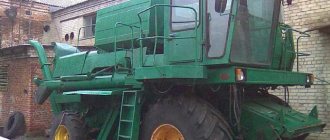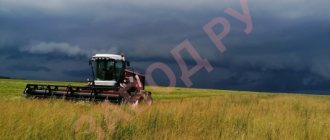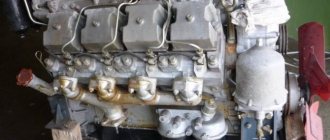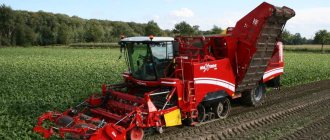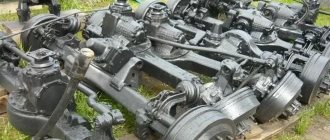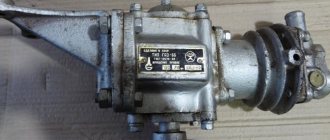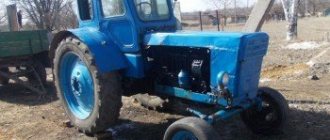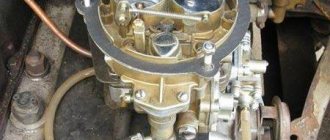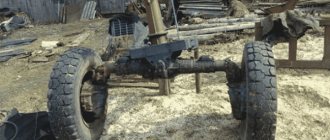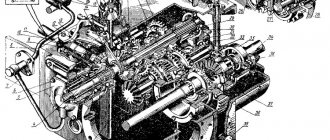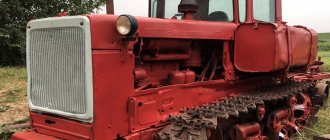TECHNOLOGICAL ADJUSTMENTS OF THE DON COMBINE
TECHNOLOGICAL ADJUSTMENTS OF THE DON COMBINE – Megatraining
| Home | About us | Feedback |
- Automation
- Automotive industry
- Anthropology
- Archeology
- Architecture
- Astronomy
- Entrepreneurship
- Biology
- Biotechnology
- Botany
- Accounting
- Genetics
- Geography
- Geology
- State
- Demography
- Woodworking
- Journalism and Media
- Zoology
- Invention
- Foreign languages
- Computer science
- Information Systems
- Art
- Story
- Cinema
- Shipbuilding
- Cooking
- Culture
- Lexicology
- Literature
- Logics
- Marketing
- Mathematics
- Mathematical analysis
- Materials Science
- Mechanical engineering
- Medicine
- Management
- Metallurgy
- Metrology
- Mechanics
- life safety fundamentals
- Occupational Safety and Health
- Pedagogy
- Political science
- Legal relationship
- Programming
- Production
- Industry
- Psychology
- Radio
- Miscellaneous
- Sociology
- Sport
- Statistics
- Construction
- Theology
- Technologies
- Tourism
- Manor
- Physics
- Physiology
- Philosophy
- Finance
- Chemistry
- Drawing
- Ecology
- Economy
- Electrical engineering
⇐ Previous4
| Average value of adjustment parameters | Rotation frequency Molotilny drum, min -1 | Rotation frequency fan, min-1 | Gap in MSU at output, mm | Gap between top blinds (lower) sieve, mm | |
| culture | mass moisture content, % | ||||
| Wheat | 9…12 | 650…760 | 650…750 | 6…7 | 12/7 |
| 13…16 | 760…830 | 750…850 | 5…6 | 15/8 | |
| 17…20 | 830;..900 | 850…950 | 4…5 | 18/9 | |
| Barley | 9…12 | 600…630 | 550…600 | 6…7 | 12/8 |
| 13…16 | 630…660 | 600…650 | 5…6 | 14/9 | |
| 17…20 | 660…700 | 650…700 | 3…4 | 16/10 | |
| Rye | 9…12 | 700…750 | 600…630 | 4…6 | 13/8 |
| 13…16 | 750…800 | 630…700 | 3…4 | 14/10 | |
| 17…20 | 800…850 | 700…750 | 2…3 | 18/10 | |
| Oats | 9…12 | 500…580 | 500…550 | 6…8 | 13/8 |
| 13…16 | 580…620 | 550…600 | 5…6 | 14/10 | |
| 17…19 | 620…650 | 600…650 | 4…6 | 16/12 | |
| Peas | 9…12 | 350…400 | 700…800 | 16…20 | 12/8 |
| 13…16 | 400…450 | 800…850 | 14…16 | 14/10 | |
| 17…19 | 450…500 | 850…950 | 12…14 | 16/10 | |
The selected adjustments and operating modes of the reel are specified.
The removal of the reel relative to the knife when harvesting tall, thick grains and with normal grain yield is carried out so that the lower part of the rake path is removed from the cutting apparatus in height by approximately 1/2 of the cut part of the stem. When harvesting tall and thick grains, the reel extension should be minimal, and when harvesting normal grains, the reel extension should be between the minimum and middle positions.
When harvesting low-growing grains (less than 40 cm), the lower part of the rake path is removed from the cutting device in height by 1/3 of the cut part of the stem, the horizontal extension of the reel is minimal (bars are installed on the rake).
When harvesting laid grains, the ends of the rake should lightly touch the soil, the reel horizontal extension should be maximum.
To prevent grain losses from knocking out, the reel rotation speed should minimally exceed the speed of movement of the combine. The main technological adjustments of the header and pick-up are given in tables 3 and 4.
TECHNOLOGICAL ADJUSTMENT OF THE HEADER FOR GRAIN HARVESTING
| Condition of the grain array | ||||||||||
Normal erect
Tall (over 80 cm)Combine speed, km/h12345678910123456789 Reel rotation speed, min—115182631364043464949151826313640434649| Cutting height, mm. Reel lifting. Reel extension, mm Gap, mm: between the auger and the bottom with the fingers and the bottom of the cutter and the bottom with the beater fingers and the attachment | 150¸180 0¸50 10¸15 12¸30 Minimum, at 23¸35 | Over 180 1/2 lengths of cut stems. The rods are completely in the cylinders 10¸15 20¸30 provided that the auger turns do not touch the header body 28¸35 |
| Condition of the grain array | Short (30…40 cm) | Lying down | ||||||||||||||||
| Harvester speed, km/h | 1 | 2 | 3 | 4 | 5 | 6 | 7 | 8 | 9 | 1 | 2 | 3 | 4 | 5 | 6 | 7 | 8 | 9 |
| Reel rotation speed, min-1 | 15 | 18 | 26 | 31 | 36 | 40 | 48 | 46 | 49 | 18 | 26 | 31 | 36 | 40 | 43 | 46 | 49 | 49 |
| Cutting height, mm Reel lifting Reel removal Gap, mm: between the auger and the bottom with fingers and the auger cutter and the bottom with beater fingers and spacer | 50¸100 50 From 1/3 of the length of the cut stems to the level The ends of the rake should touch the cut of the soil The rods are completely in the hydraulic rods The rods are extended to the maximum 10¸15 10¸15 12¸20 12¸20 Minimum, provided there is no interference with the auger turns body 28¸35 28¸35 |
TECHNOLOGICAL ADJUSTMENTS OF THE PICKUP PLATFORM FOR GRAIN HARVESTING
| Culture | ||||||||||
Wheat, rye, barley, oats
Wheat, barley, peasCharacteristics of the windrow Normal, laid on stubble with a height of 100 to 200 mm Failed, sprouted, laid on stubble with a height of up to 50 mm Combine speed, km/h12345678910123456————Pickup rotation speed, min-1148148159212265318371424475475 148148159212265318| Pick-up height (location of spacer bushings) Gap, mm: between the auger and the bottom with fingers and the bottom of the auger and cut-off with the beater fingers and spacer | Two bushings at the bottom All bushings at the top 10¸15 10¸15 12¸20 12¸20 Minimum, provided that the auger does not touch the platform body 28¸35 28¸35 |
To improve the quality of harvesting, the Don-1500 combine is driven in such a way that the general direction of lodging of the grain is at an angle of 45°, and the unmown field remains to the right; the combine should move less in the direction of lodging of grain, tailwinds, across the slope and plow furrows.
The technological adjustments of the threshing machine are adjusted in the order established in Table 37 (the digital designation refers to the order in which the combine is adjusted). After each adjustment, check the results separately. Each adjustment should not introduce more than 5% deviations in the operation of the thresher
After setting the combine for maximum productivity with minimum allowable grain losses, continue harvesting at the selected speed and use the handles to adjust the indicator for changes in the intensity of grain loss so that the lights located in its middle part are lit on the light display. Then, while driving at the same speed of the combine, by alternately changing the gaps in the concave and the drum rotation speed, the optimal values of these adjustments are selected, focusing on the indicator. With each adjustment, they drive at least 100 m or unload at least two kopecks. Similarly, the cleaning adjustments are specified using the indicator.
The quality of the combine's operation is assessed using standard methods.
⇐ Previous4
Recommended pages:
content .. 51 52 55 ..7.4
Shift maintenance (ETM) of the RSM-10B “Don-1500B” combine
— clean the engine hood, drive wheel axle, cabin, cabin air cleaner mesh, air intake radiator unit, engine and battery service area, protective covers (on top), combine panels, thresher and feeder chamber roof, header housing from dust and accumulation of plant debris or pick-up platform. Carry out an external inspection of the elements of the fuel pump, fuel lines, exhaust system located in the collapse of the engine block, oil radiator block and, if necessary, clean them of plant debris;
— clean the cardboard filter at the rear of the cab roof; if the filter fails, replace it with a new one;
— check the tightness of the pipelines of the fuel, hydraulic and brake systems, eliminate any leaks identified. Pay special attention to the condition of hydraulic units and oil lines in the engine compartment and entry area;
— check that the wiring harnesses are securely fastened, that there is no contact with moving or heating parts of the combine, that there is no wear or damage to the wire insulation;
— check the degree of tightening of the contact connections of the power circuits of the starter, generator, batteries, and ground switch. Eliminate any identified defects; — check and, if necessary, replace the knife segments of the header cutting apparatus;
— check and, if necessary, add oil to the hydraulic tanks of the hydraulic systems;
— check and, if necessary, replace the filter element of the hydraulic tank. The condition of the filter element is monitored when the oil is warm and the engine is running (nominal speed). When the filter element is clean, there should be no light or sound alarm; When the filter is dirty, the “H” pictogram on the sound and light signaling unit lights up or flashes, and at the same time an audible signal sounds in the unit; in this case, it is necessary to replace the filter element. To replace the filter element of the main hydraulic system, you need to unscrew the plug on the filter cover and drain the oil from the glass into a container. After the excessive oil flow stops, remove the cap and replace the filter element. Reassemble in reverse order.
The indicated pictogram may light up for 5-10 minutes after starting the engine and with a clean filter element, if there is cold thickened oil in the hydraulic system. After the oil has warmed up, the pictogram should go out;
— check the readings of the pressure-vacuum gauge of the GST filter with the oil warm and the engine running (rotation speed - nominal). If the vacuum value exceeds 0.25 kgf/cm2, it is necessary to replace the filter element;
— check and, if necessary, adjust the tension of chain and belt drives;
— start the engine and at idle speed, check the operation of the engine, control mechanisms, actuating units of the combine hydraulic system, instrument readings, and eliminate any detected deviations;
— clean the stone catcher;
— lubricate the friction units according to the lubrication table;
— check and, if necessary, tighten the locknuts connecting the hinges with the hydraulic cylinder rods of the steering axle;
— check and, if necessary, tighten the fastening of the cutting device drive parts;
— check the condition of the drum knives and counter-cutting knife of the chopper-spreader, if necessary, replace the faulty knife or counter-cutting knife.
The chopper-spreader drum knives are supplied with spare parts selected from the same weight group. If it is necessary to replace a failed knife, all four knives installed on diametrically located drum ears lying in the same plane must be replaced.
— it is recommended to replace a failed counter-cutting device 3 (Figure 7.1) in the following way: loosen bolt 9 and remove the locking bolt 4, turn the counter-cutting device 8 until the counter-cutting devices come out of the cavity of the body of the chopper block 2, unscrew the nuts 6, remove the bolts 5 from using the clamping bar 7, remove the failed counter-cut 3, and install a new one in its place. Next, reassemble in reverse order.
Figure 7.1 1-chopping drum; 2-shredder block housing; 3-countercut; 4-bolt retainer; 5.9-bolts; 6-nut; 7-clamping bar; 8-anti-cutting device
content .. 51 52 55 ..
Device
Engine
Six cylinders lined up inside a four-stroke turbocharged engine are cooled by water from a tubular radiator. The air is purified passing through two stages of purification. The engine is located next to the cabin, near the threshing mechanism.
Power is taken from both sides of the crankshaft, which rotates clockwise. The drives of the working mechanisms are powered from the rear, and the hydraulic pump for the chassis drive is supplied from the front.
Brake system
The unit is equipped with a mechanical parking brake, controlled by a lever with a button that snaps into place a pawl lock. To stop the car, you need to pull the lever towards you until the third or fourth click. The brake is released by moving the lever up and simultaneously pressing the button.
There are also separate hydraulic disc brakes for each wheel. They are mounted on onboard planetary spur gearboxes and are controlled by pedals, the height of which is adjusted by a hydraulic brake cylinder fork.
Hydraulics
This system consists of three: the chassis control drive, the steering drive and the hydraulic system of the working mechanisms. The latter has a minimum of piping and includes distributors with spools controlled mechanically or hydraulically. With its help, in particular, they control the header, reel, auger rotation, stacker, chopper, air duct cleaning, and scrolling of the threshing mechanism. Scheme of the Don-1500 combine
Steering
The steering column operates from a hydraulic volumetric drive. The steering wheel can be adjusted to the height of the combine operator, changing the height by up to 11.5 centimeters. A collet type clamp is used for this. It is also possible to change the tilt of the steering wheel from 5 to 30 degrees - a pedal is used for this.
Chassis
The drive axle is separate-aggregate. It is controlled hydraulically, which allows you to continuously change the speed of movement (in any of the speed ranges). Thanks to this, the combine has good maneuverability. The hydraulic motor is mounted on the shaft of the gearbox (mechanical, three-way, with four modes when moving forward and one when moving backward).
The driven axle is also hydraulically operated. The clutch is dry type, single-disc, with a diaphragm spring. The tires have treads that provide excellent cross-country ability and self-cleaning. Diagram of chain drives of the Don-1500 combine
Reaper
An inclined chamber is suspended from the thresher, to which, in turn, the header is attached on hinges with springs. It includes cutting and balancing mechanisms, as well as a drive mechanism, dividers, a reel (attached to the header by four bipods) and an auger.
Cutting mechanism - can be with open or double fingers. The reel with quick release pins, controlled by two synchronous hydraulic cylinders, is equipped with two eccentrics (located on the sides). The reel rake angle is adjusted automatically. The balancing mechanism consists of two suspensions (adjustable and non-adjustable), a lever, a removable pin, a spring block and an adapter. The auger has an increased size - 59 centimeters.
Main modifications
Don-1500A
This model is the original one. All the characteristics and features listed above apply specifically to it.
Don-1500B
This variation was a consequence of the refinement of the previous model.
In particular, the following was done:
- Many copies began to be equipped with a more modern engine - the YaMZ-238 AK, without turbocharging, with a V-shaped arrangement of cylinders.
- Instead of one stone catcher hatch, there were two.
- The size of the crankshaft crank has been increased while its rotation speed has been reduced.
Distinctive characteristics of the Don-1500A and Don-1500B models:
| Characteristics | Don-1500A | Don-1500B | Unit measurements |
| engine's type | SMD-31A | YaMZ-238 | |
| Straw walker crank radius | 6 | 8 | cm |
| Crankshaft speed | 157 | 195 | rpm |
| Engine power (operating) | 165,6 | 178 | kW |
| Rotational speed (nominal) | 2000 | 2000 | rpm |
| Number of engine cylinders | 6 | 8 | PC. |
| Cylinder diameter | 12 | 13 | cm |
| Piston stroke | 14 | 14 | cm |
| Working volume | 9,5 | 14,86 | l |
| Fuel consumption (specific) | 224-234 | 220 | g/kWh |
| Performance | 14000 | 16800 | kg/s |
| Drum rotation speed | from 512 to 954 | from 450 to 900 | rpm |
| Diameter of inclined unloading auger | 25 | 30 | cm |
Don-1500N and Don-1500R
And finally, a few words about two rarer modifications. The Don-1500N variant was intended for non-chernozem zones. And Don-1500R is for harvesting rice. The last vehicle is not wheeled, but half-tracked (also called a rice track). Video review of the Don 1500B combine:

